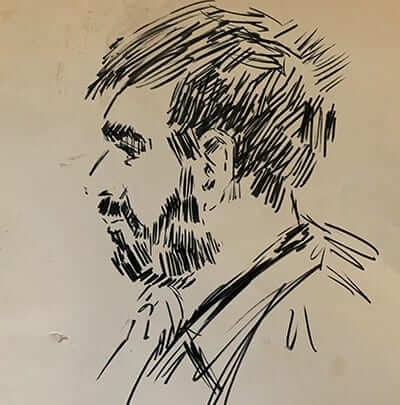
The swoop of a 1969 Corvette coupe. The streak of Daytona Yellow at night, against a fluorescent line, beneath a white-on-green sign for the San Diego Freeway. Neither a shark nor a stingray but a Stingray, with the speed of a mountain lion and a lioness behind the wheel, who wears her sunglasses at night—who wears them day and night—while she exhales cigarette smoke as her car coughs like a smoker; while the smell of ozone, with its bleach-like stench of suburban napalm, fills the air; while the driver clears the passenger seat of her notebook and Thomas Guide, that spiral-bound atlas of the street maps of Los Angeles and San Bernardino County; while she moves the leather case for her black round-frame acetate sunglasses; while she raises the concealed headlights and flashes the high beams of her sports car, as she makes room for us to take a seat.
Next stop: the desert.
A half-century after Didion drove that car, the Inland Empire of Southern California is no less hot or hellish.
A half-century after Didion sat behind her Royal KMM typewriter, a piano she plays by ear, and filed her report from the sea about the desert—in this story, which is my story by way of a dream version of Didion, she is both a girl who preferred to spend time with people who hung out at gas stations and a woman who never pumped her own gas.
She is a Westerner who loved John Wayne, a Democrat who voted for Barry Goldwater, a Californian who hated Ronald Reagan.
She is an American—a foreign correspondent in her own country—whose essay about the desert, “Some Dreamers of the Golden Dream,” is a work of excellent reportage and a reminder about the existence of evil.
It reads like a missive from a high-ceilinged room in the Royal Hawaiian Hotel, where she went in lieu of filing for divorce; where she wrote, in my mind, on legal pads and on the backs of linen postcards; where her room was across from Room 214 of the Hôtel Continental; where she wrote about a murder in the desert, while Graham Greene sat inside 214 and wrote The Quiet American; where he wrote about America’s humiliation through hallucination because the United States had contracted a form of political malaria; where, in the tropics, my Didion wrote about the devil winds, while American soldiers fought and died in the jungles of South Vietnam.
The desert may no longer offer as rich source material as when Didion had traveled there, but the whirlwind still spins on the other side of the Cajon Pass. The winds still carry pathogens, which cause “Valley fever”: a flu-like illness with fever, cough, headaches, rash, and muscle pain.
When the winds blow, meek little wives feel the edge of the carving knife and study their husbands’ necks.
Anything can happen.
Photo credit: Henry Clarke/Conde Nast via Getty Images

